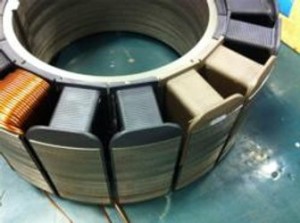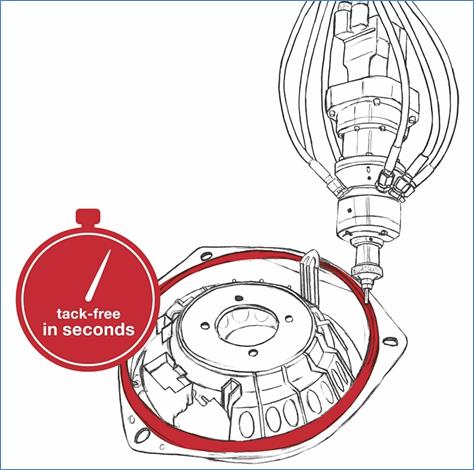
A recent breakthrough in electric vehicle (EV) motor technology from Japan-based SIM-Drive Corp extends driving range 30% further than mass-produced EV vehicles, in part due to science-powered material innovations and collaboration from DuPont. DuPont is one of 34 companies to work with SIM-Drive, Kawasaki City, Japan, on the prototype SIM-WIL next generation EV vehicle that features nearly 50 new technologies. It was unveiled in March.
SIM-Drive credits a unique “in-wheel” motor system and extensive use of lightweight materials for the significant increase in kilometers per charge. SIM-WIL also delivers a maximum speed of 180 km/h (110 mph), sports car acceleration from 0-100 km/h (0-60 mph) in 5.4 seconds, and offers a higher level of interior space and comfort.
The use of eight DuPont products including high-performance plastics, film, paper and paint in a collaborative development program between the DuPont Japan Innovation Center in Nagoya, Japan, and SIM-Drive, increased reliability and performance, yet reduced weight and an appealing interior and exterior.
“Innovations that help reduce dependence on fossil fuels play a critical role in the future of the automotive industry,” said DuPont Kabushiki Kaisha (DKK) President Minoru Amoh. “The power is both in the technology and the collaborative business model used to develop the prototype.”
“Especially in electric vehicle (EV) applications, these high temperature, chemically resistant products and electrical insulation materials contribute to increased EV system reliability and performance under severe conditions such as wide ranging temperatures and high voltage,” said Tomoyuki Shinkai, operating officer, vehicle development co-ordination division general manager, SIM-Drive Corp.
DuPont high-performance plastics such as DuPont Zytel HTN PPA in the in-wheel motor and DuPont Kapton polyimide film in indicator lighting helped SIM-DRIVE keep weight lower than EVs on the road today. DuPont Zytel HTN used in key in-wheel motor bobbins are stronger, lighter and more cost effective than the PPS it replaces. Kapton, known for use in high-reliability applications from Mars Rover to mobile devices, replaces the need for a circuit board, shaving 80 percent of the weight from the lighting component.
“This project shows how light weight, high-performance materials such as Zytel HTN PPA can take extremes, allowing designers to bring innovation to electric and hybrid electric vehicles without adding weight associated with metal,” said James Hay, regional director, DuPont Performance Polymers, Asia Pacific.
“Clearly collaboration plays a powerful role in helping showcase new and innovative ideas and in the last few years, DuPont has stepped up to the challenge with innovation centers networked around the world to connect materials-science innovation to market needs, especially in vehicle electrification, lightweighting and renewable materials,” said Hay.
DuPont recently invested in several new automotive collaboration facilities in India, China and Korea. This year, it significantly refreshed facilities in Japan, with upgrades planned for the United States and Europe.
SOURCE : http://www.adsalecprj.com/Publicity/MarketNews/lang-eng/article-126556/Article.aspx







